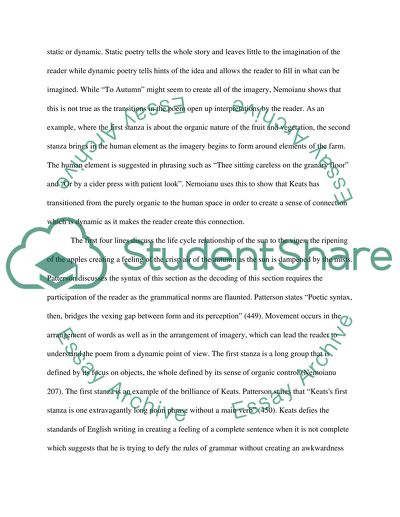Cite this document
(“John Keats: 'To Autumn' Essay Example | Topics and Well Written Essays - 2000 words”, n.d.)
Retrieved from https://studentshare.org/literature/1438979-response-paper
Retrieved from https://studentshare.org/literature/1438979-response-paper
(John Keats: 'To Autumn' Essay Example | Topics and Well Written Essays - 2000 Words)
https://studentshare.org/literature/1438979-response-paper.
https://studentshare.org/literature/1438979-response-paper.
“John Keats: 'To Autumn' Essay Example | Topics and Well Written Essays - 2000 Words”, n.d. https://studentshare.org/literature/1438979-response-paper.


